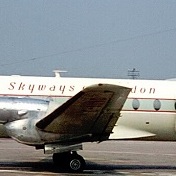BREECH wrote:TheRedBaron wrote:Sadly this tragedy will serve as an example of those little mistakes that amount to a tragedy..
Not so little, if you believe that transcript. The warning the pilots got (if translated from Russian) was "V instrument - COMPARE". How the heck is that supposed to help the pilots? Compare two indications and see that they are different? They know it already. I just cannot believe someone in his clear mind decided to make THAT a computer warning. Instrument speed - compare. ARGH!
Oh dear - where do I start?
"Compare two indications and see that they are different? They know it already"
How do you figure that? How do they know it already?
Pending comfirmation from a fully qualified An-148 pilot, I'm going to suggest that normally there is only
one speed displayed. which in ordinary circumstances would be an average from the two primary pitot tubes. If you can explain how anybody can deduce from just one figure that the underlying instruments contributing to that figure are disagreeing with each other, I'm all ears.
Presumably, under such circumstances, and having been alerted by the audible warning, the pilots now have the option to reconfigure the display to feature data from each individual pitot tube, in order that they can make their own assessment. At the very least they know that whatever figure(s) they are looking at, they must be treated with some caution.
Secondly, the point of an audible warning is to alert the pilots to something they might not have noticed. The "dumb machine" cannot guess that the pilots already know certain things. If necessary it must repeat the obvious. I cannot imagine any pilot anywhere making a case for disabling GPWS because telling him to "pull up" was unnecessary when he could already see that he had a windscreen full of angry mountain.
Finally; I don't speak Russian. I'm not even familiar with normal cockpit warning syntax except for GPWS "sink rate" and "pull up!". Maybe when they are translated into Swahili or Urdu, those phrases take on a new meaning and cause local pilots to look at each and ask "what idiot came up with those precise words?"
Likewise, "V приборная – СРАВНИ" or "V instrument - COMPARE" presumably works perfectly for a typical Russian crew. The English translation certainly works for me. So what's your beef?
I can see a case for following up such a warning with a short checklist, the top item being, "is the pitot tube heat on?"
But equally, the failure could be due to something else such as a bird strike on a protruding pitot tube. Hence a general warning is more appropriate.
Cockpit warnings by their nature need to be short, concise, and to the point.













